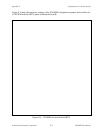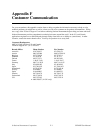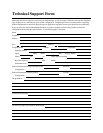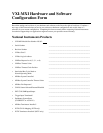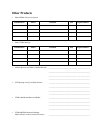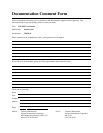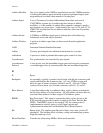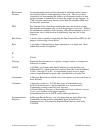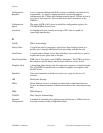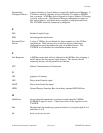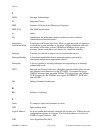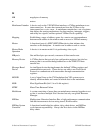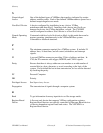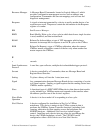Glossary
VXI-MXI User Manual Glossary-2 © National Instruments Corporation
Address Modifier One of six signals in the VMEbus specification used by VMEbus masters
to indicate the address space and mode (supervisory/nonprivileged, data/
program/block) in which a data transfer is to take place.
Address Space A set of 2
n
memory locations differentiated from other such sets in
VXI/VMEbus systems by six addressing lines known as address
modifiers. n is the number of address lines required to uniquely specify a
byte location in a given space. Valid numbers for n are 16, 24, and 32. In
VME/VXI, because there are six address modifiers, there are 64 possible
address spaces.
Address Strobe A VMEbus or MXIbus signal used to indicate that valid addressing
information exists and may be decoded.
Address Window A portion of address space that can be accessed from the application
program.
ANSI American National Standards Institute
Arbiter Circuitry providing the bus arbitration mechanism for a system.
Arbitration A process in which a potential bus master gains control of a bus.
Asynchronous Not synchronized; not controlled by time signals.
Asynchronous A two-device, two-line handshake trigger protocol using two consecutive
Protocol even/odd trigger lines (a source/acceptor line and an acknowledge line).
B
B Bytes
Backplane An assembly, typically a printed circuit board, with 96-pin connectors and
signal paths that bus the connector pins. A C-size VXIbus system will
have two sets of bused connectors called J1 and J2. A D-size VXIbus
system will have three sets of bused connectors called J1, J2, and J3.
Base Address A specified address that is combined with a relative address to determine
the absolute address of a data location. All VXI address windows have an
associated base address for their assigned VXI address spaces.
BERR* Bus Error signal. This signal is asserted by either a slave device or the
BTO unit when an incorrect transfer is made on the Data Transfer Bus
(DTB). The BERR* signal is also used in VXI for certain protocol
implementations such as writes to a full Signal register and
synchronization under the Fast Handshake Word Serial Protocol.
Bit Binary digit. The smallest possible unit of data: a two-state, yes/no, 0/1
alternative. The building block of binary coding and numbering systems.
Eight bits make up a byte.
Block Data Rate Transfer rate when using MXIbus block-mode transfers.



